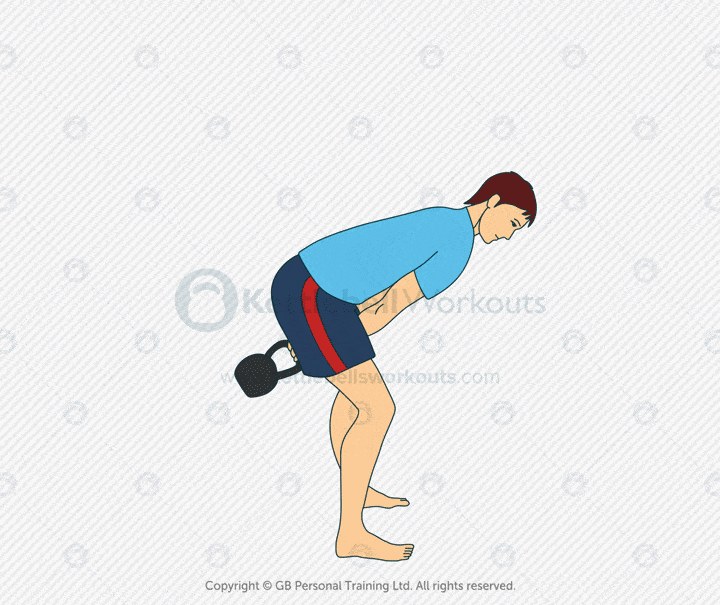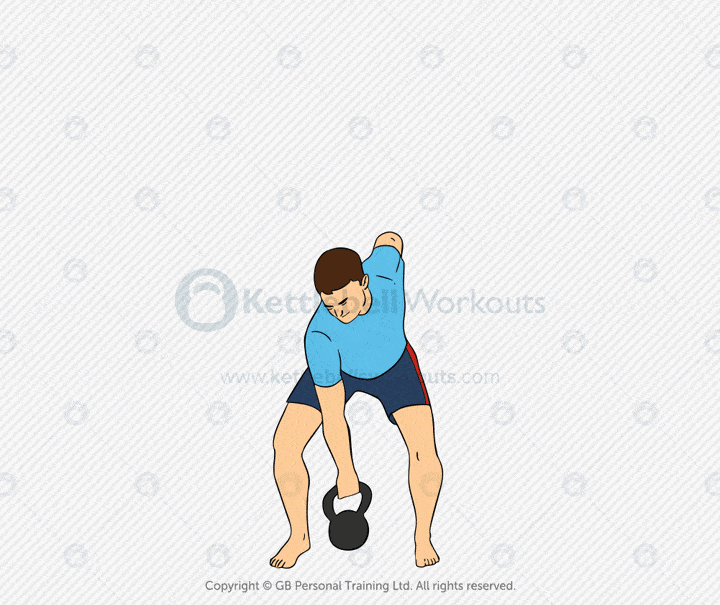Last Updated on 9 July 2025 by Greg Brookes
If you’ve ever felt stuck performing the same kettlebell workouts each week, you’re not alone. Over my 15+ years of coaching, I’ve found that using different kettlebell workout formats is key to keeping training effective, engaging, and sustainable long-term.
Each format has a unique focus, from building raw strength to conditioning, power, or muscular endurance. In this guide, I’ll introduce you to each workout style so you can choose the right approach based on your goals, schedule, and current training needs.
Kettlebell AMRAP Workouts
AMRAP stands for As Many Rounds As Possible. These workouts involve selecting a circuit of exercises and performing as many rounds as you can within a set time frame.
They are excellent for:
- Building mental toughness
- Improving muscular endurance
- Short, intense conditioning sessions
Read my full guide to kettlebell AMRAP workouts.
Kettlebell EMOM Workouts
EMOM means Every Minute on the Minute. You perform a set amount of reps or a single exercise at the start of every minute, resting with the remaining time.
EMOMs are ideal for:
- Practising crisp technique under fatigue
- Developing power endurance
- Time-efficient workouts when short on time
Explore EMOM kettlebell workouts here.

Kettlebell Circuit Workouts
Kettlebell circuits involve performing a series of exercises back-to-back with minimal rest between them.
Benefits include:
- Improving full-body conditioning
- Maximising calorie burn
- Keeping training varied and engaging
See kettlebell circuit workout examples.
Kettlebell Flow Workouts
Flows string multiple exercises together fluidly without putting the kettlebell down. They build coordination, mobility, and muscular endurance.
Flows are great for:
- Warm ups or movement prep
- Conditioning and skill integration
- Developing creative movement patterns
Learn how to master kettlebell flows.
Kettlebell Complex Workouts
Complexes involve performing multiple exercises back-to-back with the kettlebell never leaving your hands.
They are perfect for:
- Building strength and conditioning simultaneously
- Practising transitions between exercises
- Challenging mental toughness and grip endurance
Read about kettlebell complexes.
Watch a video on how kettlebell exercises can flow in complexes
Kettlebell Tabata Workouts
Tabata workouts follow the classic 20 seconds work, 10 seconds rest protocol for 4 minutes or longer.
Benefits include:
- Short, high-intensity cardio conditioning
- Improved VO2 max and anaerobic capacity
- Effective fat burning workouts
See my top kettlebell Tabata workouts.
Kettlebell Interval Workouts
Intervals alternate work and rest periods strategically for conditioning and fat loss.
Use them to:
- Build cardiovascular fitness quickly
- Maintain high training intensity safely
- Maximise calorie burn post-workout
Explore kettlebell interval training.
Kettlebell HIIT Workouts
HIIT stands for High Intensity Interval Training. Kettlebell HIIT workouts involve performing short bursts of intense exercises followed by brief rest periods.
They are excellent for:
- Burning fat quickly while improving conditioning
- Developing explosive power and muscular endurance
- Time-efficient workouts when you’re short on time
Read my full guide to kettlebell HIIT workouts.
Kettlebell WODs
WOD stands for Workout of the Day, inspired by CrossFit programming. These combine multiple formats and exercises for varied training challenges.
Ideal for:
- Keeping training interesting
- Challenging strength, power, and cardio in one session
- Mimicking athletic training variety
Check out kettlebell WOD workouts.
Kettlebell Pyramid Workouts
Pyramids involve increasing reps, load, or time to a peak, then reducing back down.
They are perfect for:
- Progressive volume building
- Strength and endurance development
- Structuring workouts for natural warm up and taper
Read my kettlebell pyramid workouts guide.

Kettlebell Ladder Workouts
Ladders increase or decrease reps each set without descending (ascending ladder) or purely down (descending ladder).
They work well for:
- Building volume efficiently
- Practising technique with varied rep ranges
- Breaking mental barriers with progressive overload
See kettlebell ladder workout examples.
Kettlebell Superset Workouts
Supersets involve performing two exercises back-to-back with minimal or no rest, maximising efficiency and intensity.
They are great for:
- Saving time in training
- Increasing muscular endurance and calorie burn
- Pairing strength and cardio effectively
Learn kettlebell superset workouts.
Final Thoughts
Using different kettlebell workout formats will keep your training fresh, challenging, and aligned with your goals. Whether you’re aiming for strength, conditioning, fat loss, or power, each format has a place in a balanced programme.
Explore the detailed guides linked above to implement these formats into your weekly or monthly plan. If you need structured programming integrating all these styles, check out my workout programs and to take your kettlebell training to the next level.
Frequently Asked Questions
Workout formats are structured styles such as EMOM, AMRAP, circuits, and flows that provide specific benefits like strength, conditioning, or fat loss.
Formats like AMRAP, circuits, Tabata, and intervals are particularly effective for fat loss due to their high-intensity, full-body nature.
Yes, but start with simpler formats such as circuits or EMOM to master technique before progressing to flows or complexes.
You can rotate formats weekly or integrate multiple styles within your monthly programme to avoid plateaus and maintain motivation.
Ladders increase or decrease reps steadily, while pyramids ascend to a peak and then descend, creating a full volume wave pattern.



Hi Greg. When thinking about an annual program, how can we combine these exercise formats? Where all formats (strength, endurance, cardio, fat loss and muscle) will be important to work at some point when thinking about the long term. Thanks!
Good question Eric and a big topic for this comment section. Basically you cycle through all the different formats every 2 – 6 weeks traditionally starting with higher reps end endurance and finishing with lower reps and power.
Hi Greg! Thanks for your email providing these details. With the above 12 methods, how to sequence them in my routine?
Thanks in advance!
Hello Iris, have another look through the article and see which workout format you are drawn to based on your specific goals.